Tiger Woods, Kerry Katona, Michael Phelps, Madonna, Lance Armstrong. The history of fmcg celebrity endorsement is littered with expensive failures.
Some have resulted from drugs scandals. Others from cheating. In the case of Lance Armstrong it was both. And then there are flops, like Ant & Dec - who parted company with Morrisons this week - that fail on simple chemistry: an endorsement that looks right on paper, but fails to ignite on screen.
Yet get it right and an endorsement can be worth millions. Sainsbury’s attributed an astonishing £153m of its £535m 2001 profits to its relationship with celebrity chef Jamie Oliver. It’s also enjoyed success using Gok Wan as the face of its Tu clothing range. The ‘dream team’ of Heston Blumenthal and Delia Smith ignited sales at Waitrose. Even Richard Hammond seemed to be a credible face for Morrisons. And who can forget Prunella Scales and Dudley Moore’s turns for Tesco?
It’s the same with consumer goods. The contribution of George Clooney to the success of Nespresso has never been stated but it’s surely measured in the multi millions. And though P&G walked away from its relationship with Tiger Woods, Nike stood by its man, even though the extra 1.4 million golf balls it had been selling every month dried up.
“The days of whacking up a billboard are waning. People are looking for the truth behind why someone is holding a product”
Nor is celebrity endorsement going away. Later this year Hollywood legend Sylvester Stallone will feature as the new face of sliced loaf brand Warburtons as it tries to reverse a £50m slump in sales.
But do the payoffs still outweigh the risks in a fast-changing celebrity landscape? What are the secrets of successful celebrity endorsement? How can the risks be mitigated? And who’s in need of a celebrity makeover?
If anyone knows about the risks it’s Iceland. It’s been using celebrities in its marketing since 2006, says Nick Canning, executive director of people and customers. And despite Kerry Katona’s much-publicised cocaine-addled implosion, it has been “very effective in terms of sales,” he insists, “or we wouldn’t continue doing it.
“When you’re a relatively small player in the market with relatively small budgets, a celebrity gives you recognition and cut-through,” he explains.
Canning insists that signing Peter Andre has been a success. Though he doesn’t disclose numbers, his latest campaign, focusing on speciality fish and meat, has led to an increase in sales for the individual SKUs featured in the ads, and across the category, he says.
Iceland also enjoys “the longest running sponsorship deal with ITV” with I’m a Celebrity, thanks to a “fantastic deal” put on the table a decade ago ago when the initial sponsors pulled out.
Canning believes “it’s impossible to mitigate entirely” against risks inherent in dealing with a public figure. (He “doesn’t want to go there” when asked on the Kerry Katona debacle as it “was a long time ago”.) But he’s clearly learnt some lessons.
”If you’ve just slapped somebody on to a product or store and are trying to gain fame with it, then it’s bound to be fraught with danger”
“If you’re going to pick a celebrity and get into that game you need to invest time and effort,” he says. It’s why Iceland followed Peter Andre’s career for years before deciding 2014 was “the right time” for an endorsement deal for the “modern father”, who boasts a “strong following across social media”.
Charlotte Ridge, head of branding at talent agency Kruger Cowne, agrees you have to “match the values” of the brand and the celebrity. She works with famous clients before a deal is struck to understand their personality and interests, personal and professional, rather than letting a brand “jump on the bandwagon” of sudden fame. This wasn’t the case when Waitrose hired Pippa Middleton as a contributor for its magazine, she suggests, a pairing that has “stopped very discreetly.”
Authenticity has become an increasingly important factor in the selection of brand ambassadors. “The days of whacking up a billboard on Oxford Street are waning,” says Greg Duggan, co-founder of WheyHey! ice-cream. “People are beginning to look for the truth behind why someone is holding a product, and that weeds out the brands that don’t justify celebrity endorsement anymore.”
“Perhaps it did work years ago, when a lot of consumers were terribly naive,” adds John Lowery, consultant at advertising agency TBWA. “But now most people just see straight through it.” Indeed Lowery believes failing to convince consumers of an authentic match is worse than a celebrity “spiralling into a drug-fuelled coma”.
Highs and lows of celeb endorsement
Gary Lineker
For 20 years Lineker has been pushing Walkers. It’s one of the most successful partnerships in British marketing history, boosting sales by up to 105%
Ant & Dec
The Geordie duo signed a multimillion pound deal with Morrisons in 2013, but the reception was mixed and they went their separate ways in 2015
Jamie Oliver
Hailed as a success for the grocer and TV chef, Sainsbury’s 11 year pairing with Oliver wasn’t without its conflict, thanks in part to the chef’s campaigning
Tiger Woods
P&G dropped Woods as a Gillette ambassador quicker than the pro-golfer dropped his trousers for a string of mistresses in 2010
Kerry Katona
Iceland stuck by Katona after a few ups and downs, including an infamous appearance on This Morning, but axed her after a drugs bust in 2009
“If you’ve just slapped somebody on a product or store and are trying to gain fame from it, it’s fraught with danger because people know it’s not true,” he says, citing “the preposterous addition of Jools Holland to the end of the Aldi Christmas ad” as one of the worst examples. “Do you believe for a minute that Jools Holland shops at Aldi?”
For Lowery “the distinction between acting and endorsement is critical”, and recruiting celebrities as actors, such as the casting of Prunella Scales as Dotty for Tesco, or Gary Lineker for Walkers, can work well. But “rubbish” endorsement packages like Ant & Dec’s relationship with Morrisons are simply “lazy”.
So is the future of celebrity endorsement limited by social media? On the contrary, says Jenna Petersen, communications planning director at media agency Carat. She believes “celebrity itself has become more accessible and democratised” thanks to the growth of Twitter and Instagram, and says people are now more likely to believe “these celebrities also go to the grocery store, and eat regular food”. It’s therefore not “out of character for a celebrity to affiliate” with consumer goods or a retailer, as long as it’s “presented in an acceptable way”.
That’s easier said than done, of course, and Canning believes the industry is “littered with examples” of endorsements that don’t convince.
Understanding the changing values of your customer base is also vital. In pairing up with Jane Asher in 2013 to launch a bakeware range, Poundland caught the attention of its new swathe of middle class shoppers.
Even Asher admits she wasn’t the “most obvious match” for a pound shop. But the discounter succeeded in surprising the actress with the quality of its wares and dispelled the lingering doubts of its new customer base simultaneously.
It’s paid off spectacularly, with the range generating sales in excess of £2m - its most popular and fastest selling range to date. Buoyed by its success it’s hoping for a repeat performance with TV builder Tommy Walsh to launch a range of round pound DIY paraphernalia.
For smaller brands with non-existent budgets, the price tag attached to endorsement can be an insurmountable obstacle, however, and a happy accident could be the only way in. That was the case for start-up WheyHey! when model David Gandy tried and loved their protein ice-cream at V Festival so much he went on to invest and front a summer-long campaign for them for free in 2013. It brought real “brand kudos”, says Duggan, and was instrumental in the ice cream “getting into the right spaces”.
Who should sign up who?
Asda
It turned its back on Coleen & co after customers said it was wrong to spend money on endorsement in a recession. The economy is recovering but if it were to partner with another celeb it would need to be a people person with mass market appeal and a sense of fun, like presenter Paddy McGuinness.
Morrisons
With Ant & Dec out of the picture it’s a fresh start for Morrisons, and whoever it chooses will probably end up focusing on its famous fresh offer. So who better than a celebrity chef, or two? The Hairy Bikers would be a perfect fit, combining humour, eccentricity, credibility and a love of old fashioned British food.
Sainsbury’s
Star of Great British Bake Off Mary Berry would be a perfect fit for Sainsbury’s middle class shoppers. A champion of home cooking, she would tie in nicely with the supermarket’s traditional campaigns, which focus on cooking from scratch. Whether she could replicate the success of Jamie Oliver or not is a different story.
Tesco
The retailer has lost trust, credibility and likeability. It needs to go back to basics, focusing on fresh food, known to drive overall brand perceptions. It therefore needs someone who embodies Tesco at its best - simple, honest, human. With a similar female fanbase James Martin could accelerate those changes.
Waitrose
OK, so he’s already signed up but does Waitrose make the most of Heston Blumenthal? He’s arguably the most famous chef in the world and although he does a fine line in recherché ready meals for the retailer, when it comes to TV and print advertising for them he’s conspicuous by his absence. Which feels like a waste.
But fame is not for everyone. The decision to part ways with Ant & Dec means none of the big four are now using celebrities. Since the split with Jamie Oliver, Sainsbury’s has shunned famous faces for a string of “real people”, with marketing director Sarah Warby describing it at the time as a shift prompted by both the “economic environment” and the fact customers are more interested in “inspiration from people you can really relate to”.
As a result its Make Your Roast Go Further, and Love Your Freezer campaigns use bloggers including Jack Monroe, Rejina Sabur-Cross and Nick Coffer.
It offered authenticity to its communications, says Bryan Roberts, analyst at Kantar Retail, who agrees consumers are less likely to approve of a supermarket “handing over vast sums to a celebrity”.
Petersen believes celebrity endorsement is simply evolving, with “expertise and influence coming from less traditional sources.”
YouTube is a prime example. It’s the birthplace of the vlogger, the top 10 of which have access to over 20 million viewers. This extensive reach is why Kellogg’s put YouTube stars front and centre of promotions for its Krave cereal brand in 2013, challenging vloggers to film and broadcast their own Krave challenge.
“It was a case of advertising following culture, and viewership for that audience,” explains Petersen. The process came with its own unique challenges, however. “Vloggers have a very strong and somewhat intimate relationship with their viewers,” Petersen adds. “To insert ourselves into that space needs to be done in an honest way.”
For Canning this shift will result in a more “layered experience” incorporating writers and bloggers, with digital content, alongside mainstream campaigns.
Regardless of the form it may take, it seems celebrity endorsement isn’t going away. What brands now have to do is learn to adapt to an increasingly clued up consumer. And if the worst does happen? “You just have to cut the cord,” says Petersen. “If a celebrity is front and centre of an ad campaign [and is working against the brief], you have to pull away quickly and publicly.”








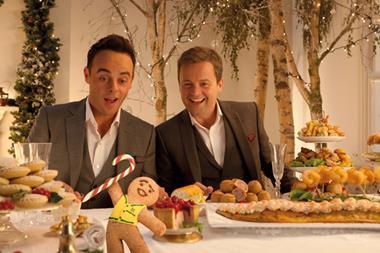
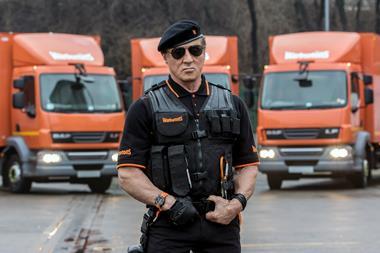
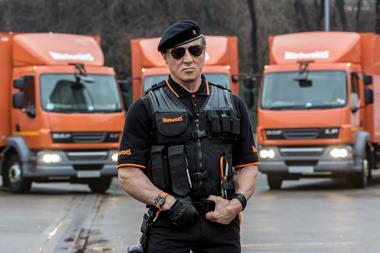
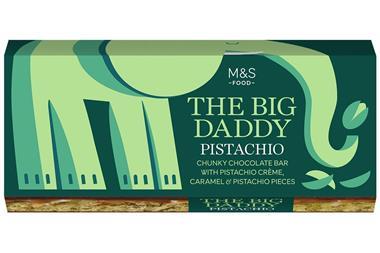


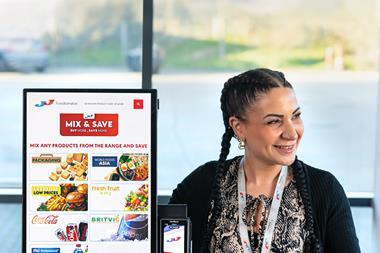




No comments yet